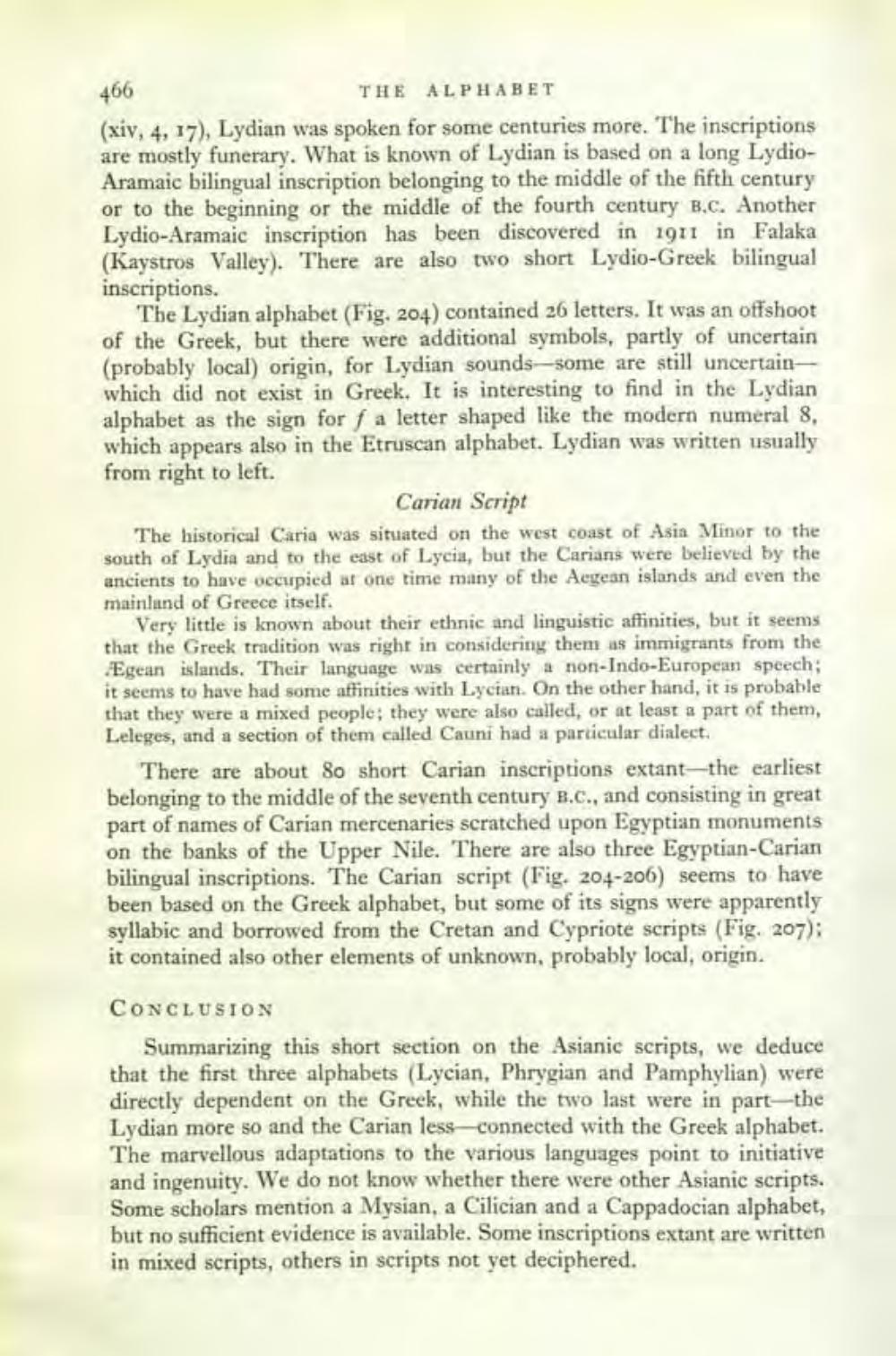________________
466
THE ALPHABET (xiv, 4, 17), Lydian was spoken for some centuries more. The inscriptions are mostly funerary. What is known of Lydian is based on a long LydioAramaic bilingual inscription belonging to the middle of the fifth century or to the beginning or the middle of the fourth century B.C. Another Lydio-Aramaic inscription has been discovered in 1911 in Falaka (Kaystros Valley). There are also two short Lydio-Greek bilingual inscriptions
The Lydian alphabet (Fig. 204) contained 26 letters. It was an offshoot of the Greek, but there were additional symbols, partly of uncertain (probably local) origin, for Lydian sounds some are still uncertain which did not exist in Greek. It is interesting to find in the Lydian alphabet as the sign for f a letter shaped like the modern numeral 8, which appears also in the Etruscan alphabet. Lydian was written usually from right to left.
Carian Script The historical Caria was situated on the west coast of Asia Minor to the south of Lydia and to the east of Lycia, but the Carians were believed by the ancients to have occupied at one time many of the Aegean islands and even the mainland of Greece itself.
Very little is known about their ethnic and linguistic affinities, but it seems that the Greek tradition was right in considering them as immigrants from the
Egean islands. Their language was certainly a non-Indo-European speech; it seems to have had some affinities with Lycian. On the other hand, it is probable that they were a mixed people; they were also called, or at least a part of them, Leleges, and a section of them called Cauni had a particular dialect.
There are about so short Carian inscriptions extant-the earliest belonging to the middle of the seventh century B.C., and consisting in great part of names of Carian mercenaries scratched upon Egyptian monuments on the banks of the Upper Nile. There are also three Egyptian-Carian bilingual inscriptions. The Carian script (Fig. 204-206) seems to have been based on the Greek alphabet, but some of its signs were apparently syllabic and borrowed from the Cretan and Cypriote scripts (Fig. 207): it contained also other elements of unknown, probably local, origin.
CONCLUSION
Summarizing this short section on the Asianic scripts, we deduce that the first three alphabets (Lycian, Phrygian and Pamphylian) were directly dependent on the Greek, while the two last were in part-the Lydian more so and the Carian less-connected with the Greek alphabet. The marvellous adaptations to the various languages point to initiative and ingenuity. We do not know whether there were other Asianic scripts. Some scholars mention a Mysian, a Cilician and a Cappadocian alphabet, but no sufficient evidence is available. Some inscriptions extant are written in mixed scripts, others in scripts not yet deciphered.




